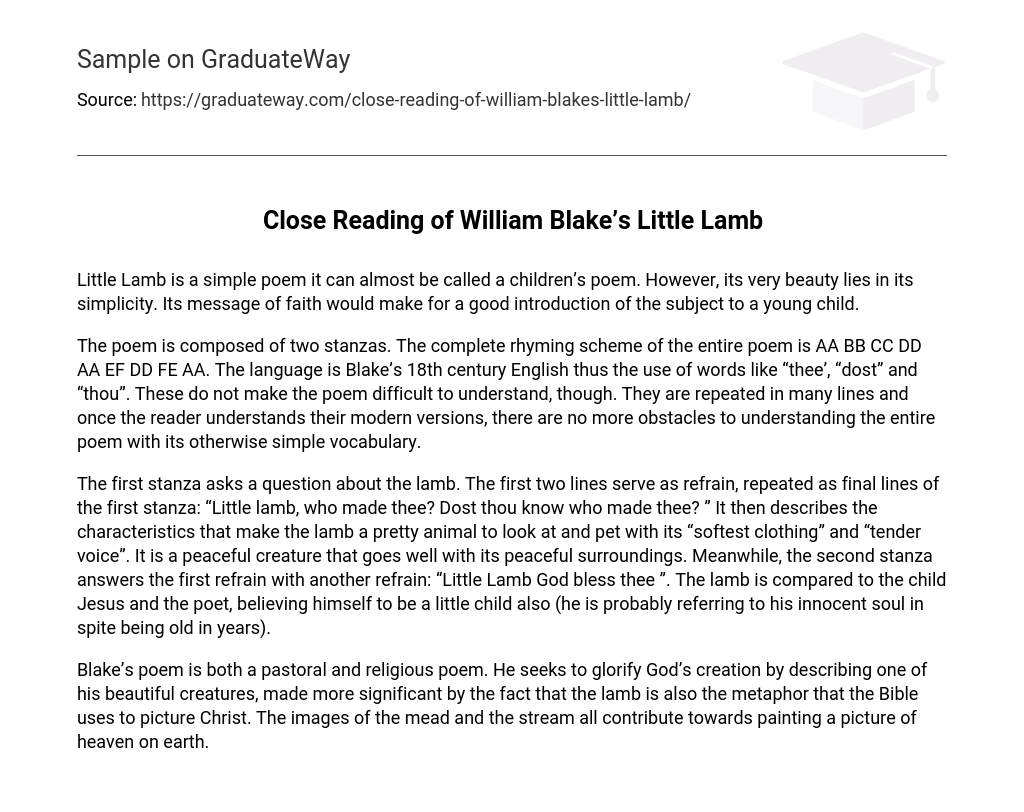Little Lamb is a simple poem it can almost be called a children’s poem. However, its very beauty lies in its simplicity. Its message of faith would make for a good introduction of the subject to a young child.
The poem is composed of two stanzas. The complete rhyming scheme of the entire poem is AA BB CC DD AA EF DD FE AA. The language is Blake’s 18th century English thus the use of words like “thee’, “dost” and “thou”. These do not make the poem difficult to understand, though. They are repeated in many lines and once the reader understands their modern versions, there are no more obstacles to understanding the entire poem with its otherwise simple vocabulary.
The first stanza asks a question about the lamb. The first two lines serve as refrain, repeated as final lines of the first stanza: “Little lamb, who made thee? Dost thou know who made thee? ” It then describes the characteristics that make the lamb a pretty animal to look at and pet with its “softest clothing” and “tender voice”. It is a peaceful creature that goes well with its peaceful surroundings. Meanwhile, the second stanza answers the first refrain with another refrain: “Little Lamb God bless thee ”. The lamb is compared to the child Jesus and the poet, believing himself to be a little child also (he is probably referring to his innocent soul in spite being old in years).
Blake’s poem is both a pastoral and religious poem. He seeks to glorify God’s creation by describing one of his beautiful creatures, made more significant by the fact that the lamb is also the metaphor that the Bible uses to picture Christ. The images of the mead and the stream all contribute towards painting a picture of heaven on earth.





